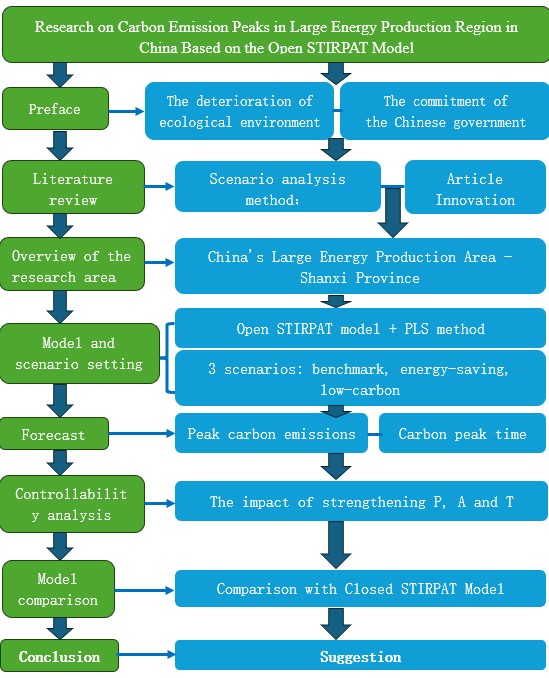
The interdependence between different regions within a country has an important impact on the prediction of regional carbon emission peaks. In this paper, taking Shanxi Province, a large energy producing region in China, as an example, we select the driving factors to construct an open STIRPAT model from both Shanxi and national levels, and use scenario analysis to predict the carbon emissions of Shanxi Province from 2021 to 2040. The study shows that: (1) In the Open STIRPAT model, the year and amount of peak carbon emissions in Shanxi province are mainly determined by the national scenarios. If the baseline scenario is chosen for the whole country, then no matter which scenario is chosen for Shanxi, it will not be able to realize the carbon peak in 2030. Under the scenario combination of low carbon-low carbon, Shanxi will realize the carbon peak in 2027. Under the scenario combination of low carbon-energy saving and energy saving-low carbon, Shanxi will realize the carbon peak in 2028. (2) The peak carbon emissions in Shanxi are mainly affected by the national scenario setting and Shanxi's emission reduction strategy. Controlling per capita GDP and energy consumption of 10,000 yuan GDP is an effective emission reduction strategy. (3) Compared with the open STIRPAT model, the closed STIRPAT model delays the year of peak carbon in Shanxi and overestimates carbon emissions by 20%-44%. Therefore, Shanxi should pay attention to the development of energy saving at the national level in formulating its carbon emission strategy, take it as an important constraint for Shanxi's peak carbon policy, and formulate a flexible carbon emission peaking program.
Total file downloads: 30